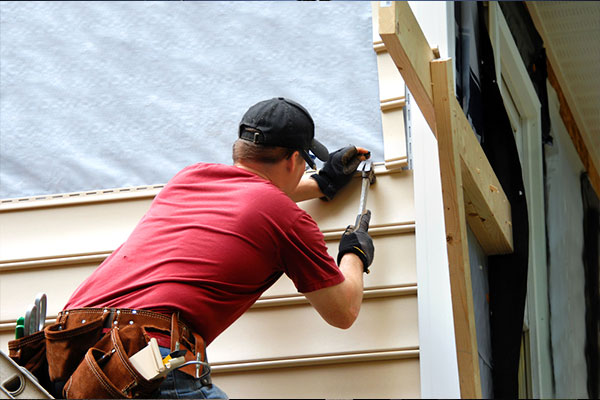How To Choose House Siding: What To Consider
Roofing Trends
Author: Amy Freeman | February 17, 2025
The siding on your home has a big job to do. It protects the interior of your house from the elements. It also maintains your home's curb appeal, making your property look appealing. The right siding seamlessly blends form and function. When it's time to swap out the siding on your home, you can dramatically increase the house's energy efficiency while improving its appearance.
Since there's a lot at stake, knowing how to choose house siding — from which colors to pick to the type of materials to choose — is a big deal.

Choosing Siding Color for a House
The color of your siding should coordinate with other exterior features such as your home's roof and the trim around the windows and doors. If you have a darker roof, a lighter color will work well for the siding, creating a nice contrast between the walls of the home and the roof.
While your house doesn't have to match the neighbors', it might be nice to choose a color that complements nearby properties or that creates a unifying aesthetic. If you live in a neighborhood with a homeowners association (HOA), it might have some say over the siding color you pick.
The size of your house can affect the siding color you choose, too. If you have a large home, a dark siding color can easily become overwhelming. Also, consider the landscaping around your home. If it's bold and colorful, a subdued or neutral siding color might be best.
Choosing Siding Materials
The type of siding material you pick influences the color choices available. Siding materials also affect the cost of your project. Some materials, such as wood, add natural beauty to a house but have a relatively steep price tag. Wood siding also needs regular maintenance to keep it looking good for years, which might be a strike against it in your book. If you want colorful wood siding, you need to paint it, and that will require occasional touch-ups.
Engineered wood offers the beauty of real wood but has lower maintenance requirements. The same is true of fiber cement, which resists rot and won't get eaten by insects.
Vinyl siding is one of the most popular options for good reasons. It has an affordable price tag and a long lifespan. It's available in a range of colors and styles, including siding that looks like wood or stone.
Choosing Siding Thickness
Think of siding as a stylish blanket that wraps around your home. The thickness of the siding can directly influence how warm or cool your home is, depending on the season.
Vinyl siding has several grades based on thickness and perceived quality. The thinnest, builder's grade, measures just 0.04 inches thick. The thickest, called "super thick", is 0.05 inches. Although that doesn't seem like much of a size difference, choosing a higher grade of siding affects its longevity and improves its insulative properties.
Other Considerations for How To Choose House Siding
While color, material and thickness are the three big considerations when choosing siding, there are a few other things worth thinking about. One is how much energy you have for maintenance. If you don't want to have to inspect the siding annually or constantly reseal or repaint it, pick a material that has few maintenance needs, like vinyl.
Also, think about how the siding will affect the resale value of your home. You might not be planning on moving any time soon, but if you do want to sell, the quality, longevity and appearance of the siding can go a long way.